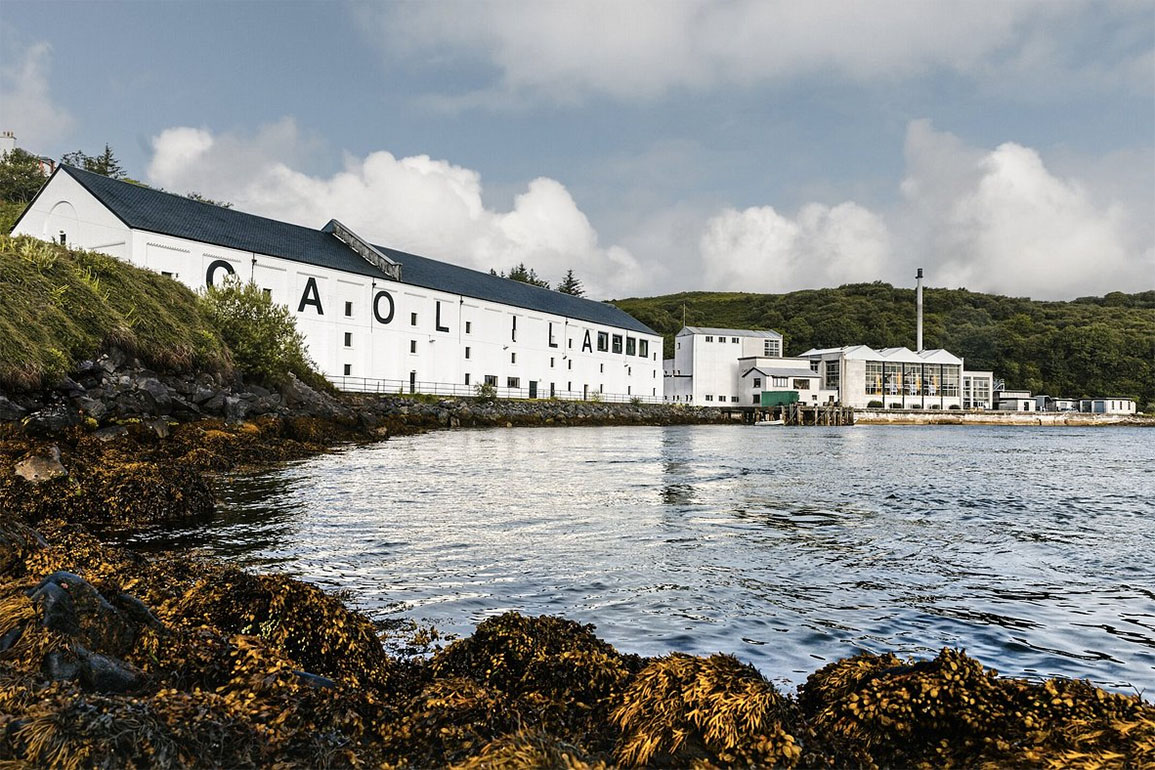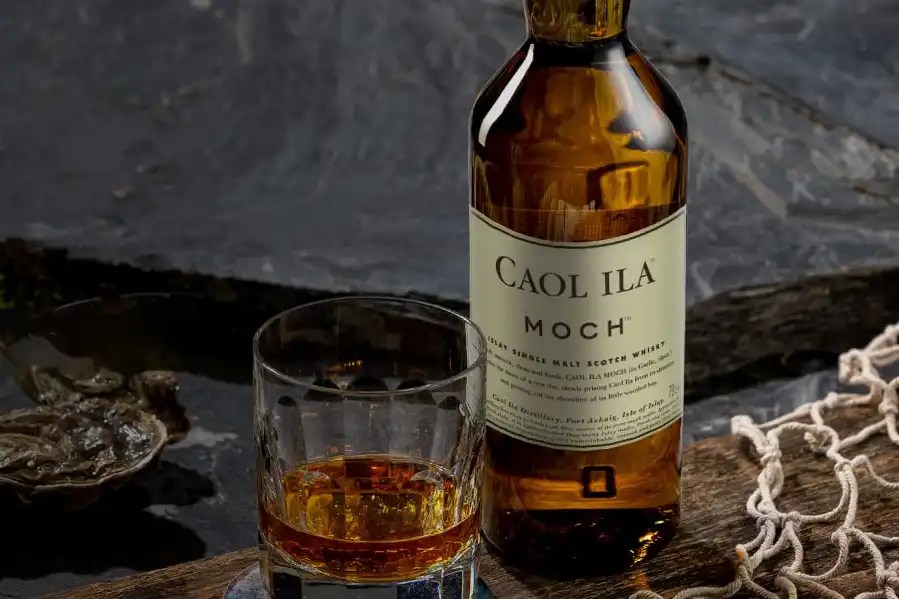Caol Ila’s story
Caol Ila is the largest distillery on the Hebridean isle of Islay and produces 6.5 million litres of whisky a year. Despite this it is relatively unknown outside of tight whisky circles compared to some of its more illustrious neighbours on the island. This is due to its peated whisky forming the backbone to owner Diageo’s world famous Johnnie Walker range of blended Scotch whiskies. A compact range of award-winning single malts is available that showcase Caol Ila bonfire smokiness.
Caol Ila is located on the northeast coast of the island and means ‘Sound of Islay’ in Gaelic. This is the name of the fast flowing, narrow stretch of water that separates Islay from the neighbouring island of Jura, which the distillery overlooks. Its location is remote and surrounded by rugged sea cliffs and caves on three sides. Its location was selected for its proximity to an abundant water supply from nearby Loch Nam Bam. This water was originally used to power the distillery as well as in the whisky production.
Diageo have overseen huge renovation of Caol in recent years which has seen production almost double and an impressive visitor centre – this is part of The Four Corners of Scotland project, which showcases four distilleries in different regions that are important to the Johnnie Walker blend. The three others are Cardhu representing Speyside, Clynelish in the Highlands and Glenkinchie in the Lowlands.
Caol Ila’s history
Caol Ila was founded in 1846 by Hector Henderson. He worked at Littlemill distillery near Glasgow, before moving to Islay. However, it did not take long before he ran into financial trouble and after just six years he sold to Norman Buchanan, who was formerly at nearby Jura distillery. Buchanan himself was declared bankrupt just over a decade later in 1863 and the distillery was taken over by a Glasgow based blending company called Bulloch, Lade & Co. They were a deeply religious company and built a small chapel next to the distillery. Every Sunday, they would send a theology student from Glasgow to preach gospels to the distillery workers and their families with attendance being compulsory.
Bulloch, Lade & Co. carried out extravagant expansion of Caol Ila during the 1870s and all of the whisky was sent back to their Glasgow headquarters to be blended by them or sold to other such companies. Bulloch, Lade & Co. went into liquidation in 1920 and the company (including Caol Ila) was bought by a consortium of companies including Dewar’s and Distillers Company Limited. DCL later became the sole owners but were forced to close Caol Ila in 1930. It re-opened several years later in 1937 but was closed again in the early 1970s. This time it was because of major renovation plans that saw everything of the old distillery demolished, bar the unique three storied warehouses.
Experiments with unpeated malt began in the late-1990s and the distillery ran this option for minimal periods each year for a short time. These bottlings are rare and have been restricted to the Diageo Special Releases series. The most recent renovation has made the most of the cramped site and was completed in 2022. This doubled capacity and saw a state-of-the-art visitor centre opened.
- How to pronounce Caol Ila? cull-eel-a
- Country: Scotland
- Region: Islay
- Founded: 1846
- Current owners: Diageo
- Production capacity per year: 6.5 million litres
- Mash tun: 12.5 ton
- Washbacks: 10
- Stills: 6
- Visitor centre: Yes
Caol Ila Distillery
Port Askaig
Islay
PA46 7RL
tel – +44 (0)1496 302760
www.malts.com/caol-ila
Did you know?
Caol Ila is one of the Scotland’s biggest exponents of the European Parliament’s Waste Water Treatment Directive, launched in 2000. A 335 metre long pipeline stretches from the distillery out into the fast flowing waters of the Sound of Islay and safely disposes of Islay’s whisky production waste products, called pot ale. Other distilleries on the island send their pot ale to Caol Ila, who dispose of 2.5 million tonnes a week.
Caol Ila





